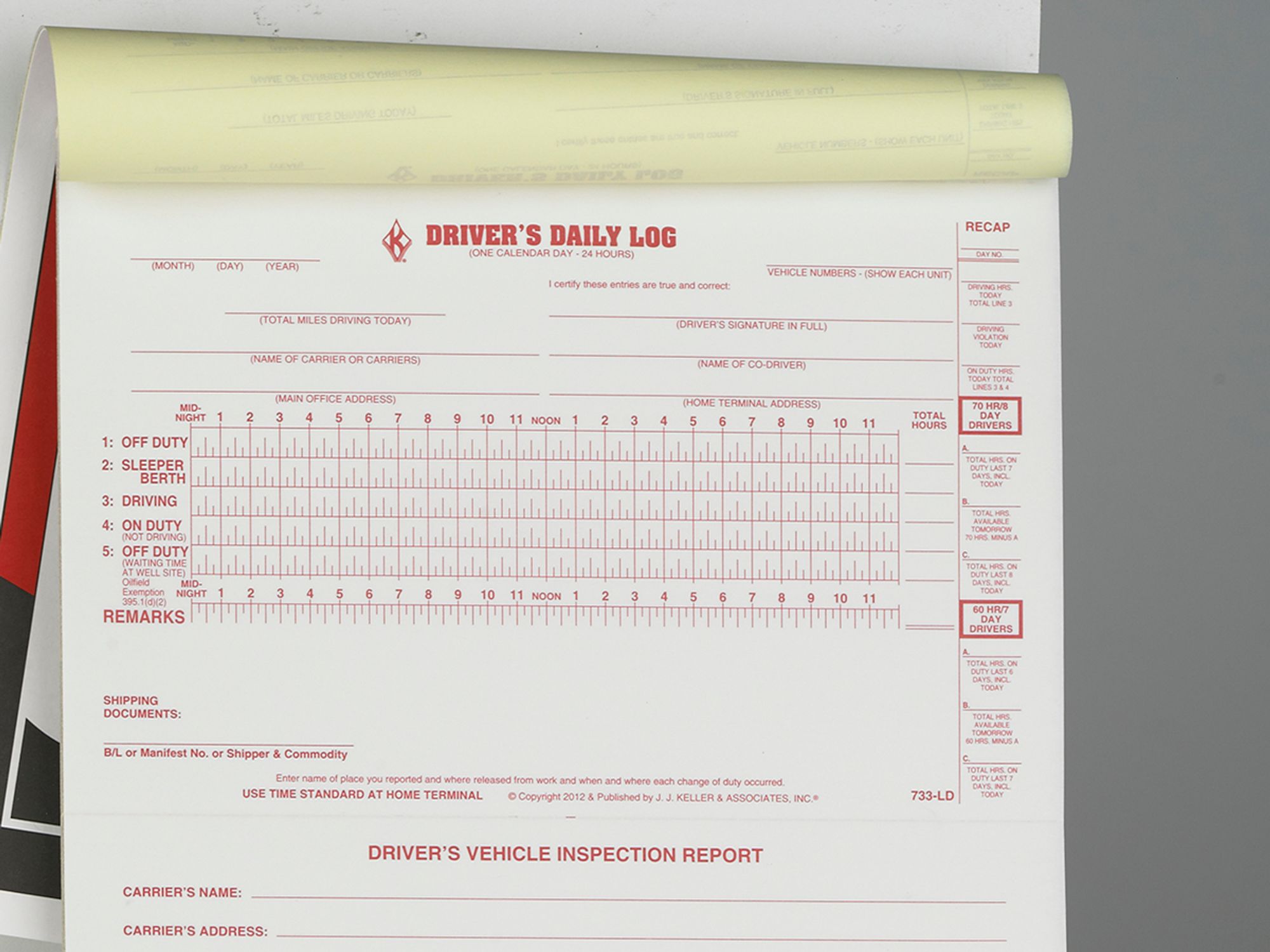Hours of Service: Logs and time records

- Most regional and long-haul drivers of CMVs in interstate commerce must use an ELD.
- Some drivers may be required or allowed to use paper logs or basic time records, and still others may be exempt from needing logs.
- Drivers eligible to use paper logs have the option to create digital logs on an electronic device.
- New or intermittent drivers must provide a seven-day time statement before they drive.
Drivers of commercial motor vehicles (CMVs) must keep accurate records of work and rest hours to ensure compliance with the hours-of-service rules. The specific method a driver uses to keep these records will depend on which rules apply.
The methods include electronic logging devices (ELDs); paper or digital logs (also known as records of duty status (RODS)); and basic time records or “exemption logs” for drivers using a short-haul exception from normal logs.
Which type of HOS log is needed?
Careful consideration must be given to the type of log to be used. Some drivers may be required to use a specific type of automated electronic logging device (ELD) while others may be required or allowed to use paper logs or basic time records, and still others may be exempt from needing logs. Furthermore, those eligible to use paper logs have the option to create digital logs on an electronic device.
Motor carriers, in general, should assume that their CMV drivers who are subject to hours-of-service rules must use an ELD unless they know that an exception applies.
- Most regional and long-drivers operating in interstate commerce are required to use an ELD.
- Short-haul drivers who stay within 150 air miles and return home each day may be eligible to use basic time records.
- Drivers who must log only on occasion (roughly twice per week or less) may use paper (or digital) logs.
- State requirements may vary for drivers engaged in intrastate commerce.
If a driver is required to use an ELD, then the driver must use an ELD in every commercial motor vehicle (CMV) operated.
Manual RODS
Some CMV drivers who are subject to logs may be eligible to use manual (paper or digital) logs in place of an ELD, depending on whether the motor carrier allows it. This is the case when a driver is operating a CMV:
- In a manner requiring completion of a RODS on not more than 8 days within any 30-day period (in other words, a driver who must use logs on only 8 or fewer days out of any 30 days may use paper logs in place of an ELD);
- In a driveaway-towaway operation in which the vehicle being driven is part of the shipment being delivered;
- In a driveaway-towaway operation in which the vehicle being transported is a motor home or recreation vehicle (RV) trailer; or
- That was manufactured before model year 2000 (as reflected in the vehicle identification number (VIN) as shown on the vehicle’s registration).
If the driver and/or vehicle does not meet the above criteria, an ELD is likely needed.
New or intermittent drivers
Before a new or intermittent driver may start driving a CMV, the motor carrier must have a complete picture of the driver’s hours of service so the carrier can verify the driver has available driving time. This record must cover the prior seven consecutive days. Specifically, the carrier must obtain from the driver a signed statement showing the driver’s on-duty time during those seven days and the time at which the driver was last relieved from duty. (395.8(j)(2)).
